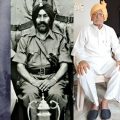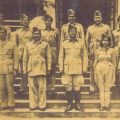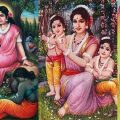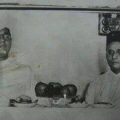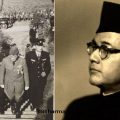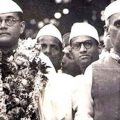Unknown Facets of Azad Hind Fauj Battle: Assam Derby Tea Estate Connection
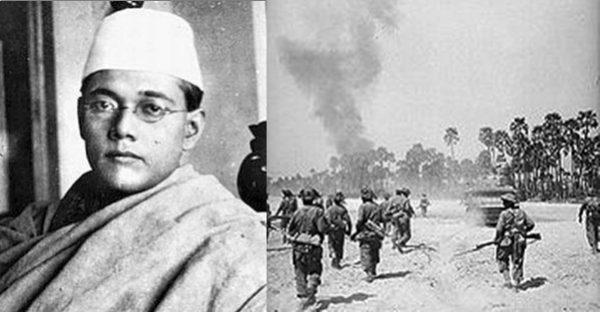
While going through the dateline of the battle fought by Azad Hind Fauj, I came across the date of 7th April, 1944. It was mentioned in that chronicle that “Bengal Railway threatened. Sylcher Bombed”. I was astonished. I was dragging my feet on my posting to Silchar (Yes, now its spelled so). I decided to discover. Upon arrival here I enquired from our men whether there’s any archive here, as that was the only place here to find any piece of document or details of the bombing incident. Sadly none could tell me. I continued to do so. One day, one gentleman, Mr. Nath, who’s well acquainted with the place, but now posted in Kashmir told me that there’s an old library here near the Metro mall and some clue can be found there. On a fine Saturday afternoon (though our office is ‘unofficially’ on) I took permission and ventured out. From Sadarghat, I took an e-rickshaw and told that guy to drop me near the library near the Metro Mall. One co-passenger told me that particular library was probably gutted in fire long ago. So they discussed amongst themselves and dropped me in front of a bookstore. ‘Choudhury Book Store’ ………. When I announced the purpose of my visit to the owner Sh Pradeep Roychowdhury he told me that his ‘Sir’ (Teacher) had written two books on BARAK VALLEY and was an expert on it and that I may find some clue in it.
When asked about him, he said that he, Sh Jyoti Lal Choudhury, was the Professor of English in Cachar College and now after retirement, he was editing the English newspaper ‘Sentinel’ at Silchar. Desperate for any clue, I asked for the books. One book was “British Raj in Barak Valley’ and the other was ‘Rumblings in the North-East’. When I turned the first two-three pages of the books, I instantly knew that he was the person I was looking for !! I found that he had also studied from BHU (so did I) . What a God sent opportunity !!. We spoke over phone and I expressed my desire to meet him. He said he was sitting at the Sentinel office at Ukilpatti, just opposite the road. He is an old man with considerable knowledge about the affairs of Barak valley. He was delighted to know that I am also from Varanasi and a product of BHU.
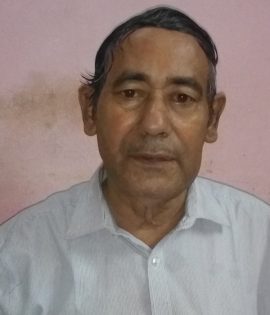
Sh Jyoti Lal Choudhury
When I asked him about the incident of 7th April, 1944, he instantly related to it. He said that the Japanese Army wanted to bomb the Silchar Railway Station. When their planes arrived, they saw smoke billowing out of some place. They thought that it was smoke from steam engine (locomotive) at railway station and dropped bombs there. Later it turned out to be the “Derby Tea Estate” . I enquired from him how far it is from there. He said its about 20 kms. He said that the craters made by the bomb are still visible today and they have the remains of the bomb too.
I decided to venture next day, being Sunday. However we chit-chatted on for about an hour more and he elaborated upon the history of Barak Valley.
The British annexed the Cachar area from the Dimasa dynasty (Burmans from North Cachar – Dima-Hasao district ), 1832. Last king of this dynasty was Gobindo Chando, who was childless. As per the British policy of ‘Doctrine of Lapse’, they annexed this kingdom and signed the ‘Treaty of Yamdavoo’, under which the Manipuris had a pact of ‘No-attack’ with British. From 1832 to 1866, the Head of Administration of Cachar area was called the Superintendent, but in 1867 it was upgraded to the post of Dy. Commissioner.
He also informed that Netaji had visited Silchar in 1939. He was facilitated at Silchar Municipality and visited the house of Sh Rukmini Das, Chairman of Municipality, in the same Ukilpatti locality where I was sitting. He walked in the lane. He said that the descendants of Sh Rukmini Das still live in that house. I asked him whether they have any photo of Netaji sitting in the house. He said, they have but its very hazy and unworthy of printing. He also said that he had met one person named “Luna Hmar” at Jiribam, Imphal. He fought against the INA in 1942. He was facilitated by King George VI for his bravery, valour and chivalry.
He also elaborated upon the historical importance of Silchar in the Mutiny of 1857. Two hundred Indian soldiers of British Army, looted the Chittagong armoury and passing through dense forests and hills, they reached Silchar to attack the Silchar Cantonment. They were confronted by the British Forces from the Cantonment at a place called Latu, which is near Silchar, under the command of Major Bing. The Major was killed in the battle.
I requested him to provide me with some contact no. of someone in the Derby Tea Estate. On Sunday, he rung me up and provided me with the contact no. of Mr. Kamlesh Singh, the Director of the Derby Tea Estate. I spoke to him. He told me that he purchased the estate in 2005 and before that it was being run by some local people, who, due to some financial constraints, sold off the remains of the bombs, in scrap !!! He told me that the craters are still there. He gave me the mobile no of Sh Sukesh Singh, the Manager of the tea estate and said he will facilitate my visit there.
The Journey and the Destination
I started rather late on 5th August, 2018, Sunday. From Sadarghat took a shared auto to Rangakheri From there I took another auto to Nutan Bazar and from there one reserved auto to the Derby Tea Estate. In between, I kept talking to Sh Sukesh, who kept guiding me. When I reached the tea estate, daylight was failing. We shook hands and I requested him to show me the craters immediately. We immediately hopped on his Mahindra jeep and headed towards the craters.
The first crater was just behind the factory. The place of the crater has now been converted into a pond, now full of hyacinths. We took a local named Ranjit Dhobi from the village, who told us that three bombs were dropped there by the Japanese Army, from airplanes. The craters, we were told, were too deep and that his forefathers had seen the craters.
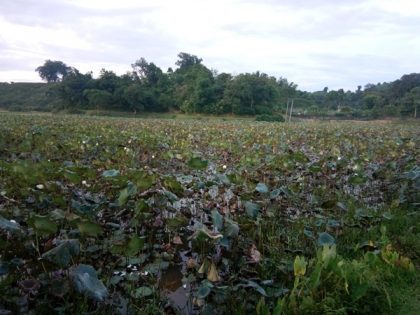
The crater is now a pond, full of hyacinth; The locals said their parents had actually seen the craters that three bombs were dropped
Soon another local named Chunilal Kalwar joined us. He told us that one more bomb was dropped near the house of one Sh Rajesh, just nearby and that the crater formed by that has now converted into a quicksand.
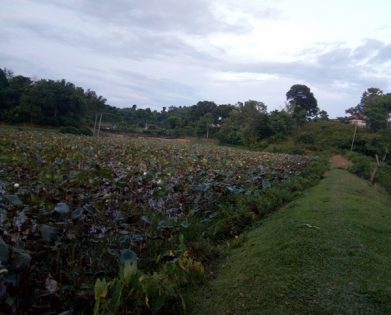
Three Bombs were dropped at this place and now the place has a pond. The spot is just behind the tea factory
A little ahead, we met another local – Aniruddh Gwala, who showed another spot where another bomb was dropped. This place is like a marsh land.
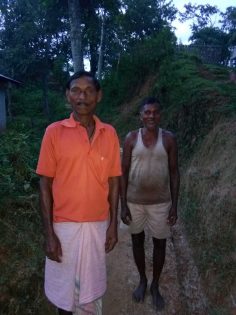
(L to R) Chunilal Kalwar & Ranjit Dhobi
I took photos of both these places. They all informed me that some people and a lot of cattle had died in the bombings and that there was widespread panic in the village and people fled the village after the bombings.
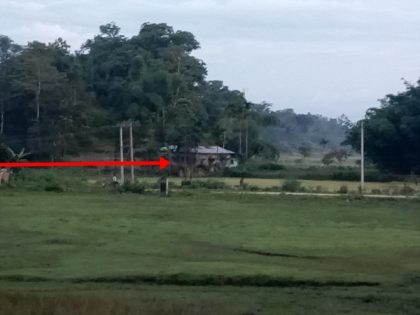
House of Sh Rajesh, where the fourth bomb was dropped. The crater has now turned into a ‘Quicksand hole’
Sh Sukesh told me that the Tea Estate used “Reflector Papers” on the roofs and the Japanese wanted to bomb the Silchar Helipad (which was in existence then). They mistook the shining papers for lights at the airport and dropped the bombs there. One very interesting thing happened thereafter. Realising their mistake, the Japanese returned the day after and dropped many pamphlets saying ‘Sorry’ and apologizing for their mistake !!!
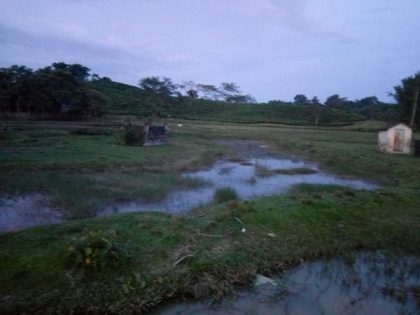
Place of fifth bomb. The place is now a marshy land, shown by Aniruddh Gwala
On our journey back to the tea estate, he showed me another place which was also bombed, but due to failing daylight, I could not take pictures of that place. I spoke to some of the villagers, who gave more or less same account.
Thereafter, upon returning to the factory office, I had tea and left for the Director’s Bungalow to meet Sh Kamlesh Singh, the owner of the tea estate. In ten minutes, I reached the majestic bungalow, through a swirling hilly pathway. We sat in his more majestic drawing room (having a fire place, high ceilings and oriental ceiling fans) and was joined by his son Sh Sushil Singh, who is a ex-banker. He had a wonderful portrait of Netaji in uniform in his drawing room.
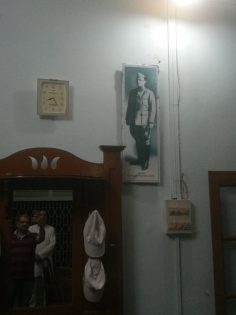
The portrait of Netaji in his historically majestic pose was adding glamour to the drawing room of Sh Kamlesh Singh
He revealed some interesting facts about tea gardens. He said that among the 101 tea gardens in the Cachar area, the British held on to many tea gardens, even after independence and left the tea gardens much after independence and some even as late as in 60s. British left the Derby tea estate in 1954.
He narrated another interesting incident. He said that the for communication, the British used a system called ‘GTS (Grand Telecom Service)”, in which Iridium Pillars were used. They burrowed the Iridium Pillars below the ground and could send messages directly to England, directly from their Bungalows in the Tea Estate. He said that after the British left, there was a mad rush to recover the Iridium pillars, the cost of which was rumoured to run into thousands of crores. In their pursuit, the locals and some Manipuri Pandits (who also performed Hom and Yagna in the Director’s Bungalow), dug up trenches all around the bungalow and also in front of the bungalow of the Manager. But sadly they couldn’t find anything !! They were all driven out after Kamleshji arrived.
Night Halt and Hospitality
I stayed with Sh Sukesh Singh, Manager of the tea estate in his bungalow. He is an ardent devotee of Hanumanji and has a very serene Puja Room in his bungalow. It was a old British time bungalow, beautifully and tastefully decorated. Surrounded by lush green fields and mountains, its an ideal retreat for anybody. Sukesh ji was rather tense because of an undetected infection of his mother, who is presently admitted in CMC, Vellore. He said that he is not able to go there due to his preoccupations, but has made all the arrangements for her and that his father is also accompanying her. But he seemed to be mentally drawn to this problem.
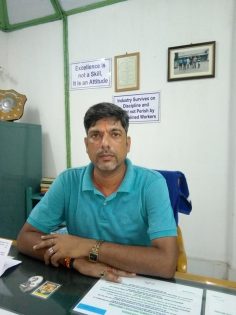
Sh Sukesh Singh, Manager of Derby Tea Estate in his office
On the dinner table, we talked about the battle of Azad Hind Fauj, role of Netaji in freedom movement and how India’s history would have been positively different, had Netaji’s Azad Hind Fauj reached its declared destination, Delhi. He said that he believed that amongst the foremost contemporary Congress leaders of times, Netaji was the only “Freedom Fighter”, in the true sense of the word.
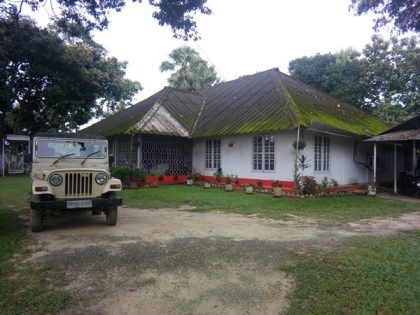
Majestic colonial bungalow of Sh Sukesh Singh, Manager; The bungalow brought nostalgic memories of Railway Bungalows of Asansol, where I spent my childhood
During my short stay, I spoke with the labourers and locals and got the impression that Tea Gardens are still carrying on with the legacy of the British Raj and are carefully holding on with the system. In the erstwhile Raj days, the tea garden managers were considered as ‘Demi-Gods’ and the locals couldn’t muster any courage to speak against these managers, some of whom were known to be awfully exploitative. These days, the managers have lost that clout and sheen, but the locals, who are still dependent on these tea factories, work for a meager salary just for their sustenance. The healing touch is that the Central govt has provided homes to many of these villagers, under the PM Awas Yojana or so.
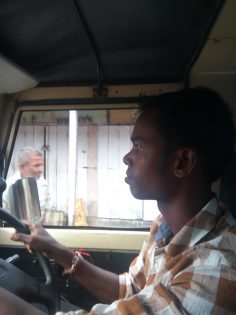
Vivek, the driver of Derby Tea Estate
On way back, I spoke to the driver, Vivek a young lad, whose mother also works in the factory and has a young sister, echo the same.
This is the biggest challenge. The imprint of British Raj is embossed in our minds. Though we somehow got rid of the British, their system and legacy still haunt us or rather, still rule our psyche and we have not been able to shake it off. We still hold on to our habit of mental slavery and the true essence of democracy still eludes us. Tea garden system is just a cross-section of the system at large. Its apparent everywhere. Will we have to fight a Second ‘War of Independence’ ……. This time with OURSELVES ?? Isn’t it true ??
Featured image courtesy (battle) – eRepublik. Rest of the images were clicked by the author during his research expedition of the area.
Disclaimer: The views expressed here are solely of the author. My India My Glory does not assume any responsibility for the validity or information shared in this article by the author.
Tamal Sanyal
Latest posts by Tamal Sanyal (see all)
- Pleasure Doctrine: An Unpleasant Hangover of the Colonial Past - October 23, 2024
- 1945 Nilganj Massacre of 2000+ INA Soldiers by British; Await Recognition - October 23, 2024
- Unsung Battle of Shivala (Varanasi) that Forced Warren Hastings to Flee - October 23, 2024

